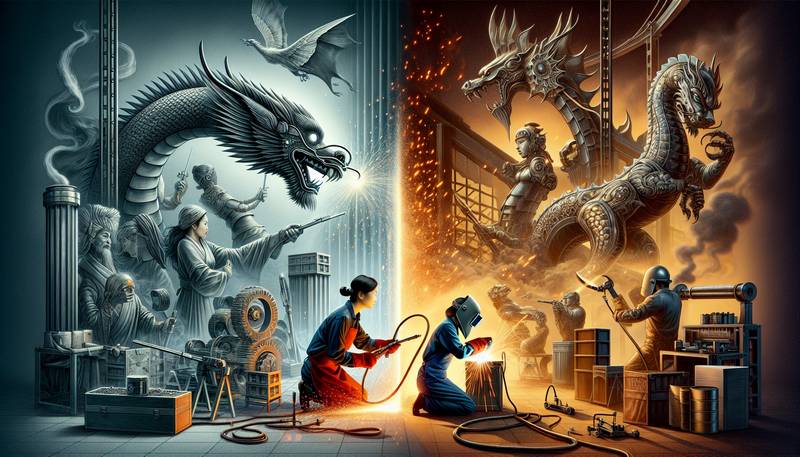The Impact of Robotics on Welding Jobs

Welding: Not Just for Building RobotsOnce upon a time, in a land filled with sparks and the delightful scent of molten metal, welding was the go-to profession for folks who enjoyed a bit of heat in their lives. Picture this: a helmet-clad artisan, steady hands transforming metal into structures that held up bridges, buildings, and the occasional fantastical project like a dragon statue that definitely wouldn’t breathe fire. Fast forward to today, and those skilled welders are facing a new rival: robots. Yes, the same machines that give us a reason to stay indoors on rainy days are now stepping into the welding scene, and it’s creating quite a stir.Meet the New Welders on the BlockWhile your typical welder may have spent years perfecting their craft, today's technology has rolled in like a lion at a sheep convention. Robots are here, and they’re not just for sci-fi movies anymore. They come equipped with precision that can make even the most experienced welder question their life choices. These robotic arms can handle everything from arc welding to laser welding with a level of accuracy that makes you wonder if they have taken calculus in their spare time.But don’t feel too bad for the human welders just yet. These machines are more like sous-chefs in a high-end kitchen than ambitious culinary competitors. They can take on the repetitive tasks—think of them as the chopping onions of the welding world—allowing human welders to focus on creativity, complex challenges, and that lots-of-caffeine-induced spark of genius.How Robots are Reshaping the WorkforceAs robots integrate more into the welding industry, it’s essential for everyone to adapt to the changing landscape. Here’s a snapshot of how welding jobs are evolving:- Increased Efficiency: Robots can work tirelessly without the need for coffee breaks, lunch hours, or a good cry over a difficult weld.
- Enhanced Safety: Let’s be honest—wielding a welding torch is way less dangerous when you’re not the one holding it. Robots can take on the dangerous tasks while humans oversee from a safe distance.
- Job Evolution: As robots take on more repetitive tasks, welders are transitioning into roles that require greater creativity and problem-solving. Think less “welding grunt” and more “welding artist.”
But it’s not all roses and celebratory sparks. There's a palpable fear among welders about job security. After all, can a robot truly understand the importance of a good old-fashioned welding joke? Spoiler alert: no. Training for a New EraAs robots become more integrated into the industry, the training landscape must adapt. Technical schools and vocational training programs are now focused on teaching individuals how to work alongside robots instead of competing against them. This means welders are learning and polishing their skills in programming robotic machines, ensuring they remain a vital part of the manufacturing process. It’s a bit like teaching your dog how to fetch the newspaper; soon, you’ll find yourself relying on it to take care of that task while you kick back with your favorite show. Just remember to reward your robot with a shiny upgrade instead of a treat.The Future of Welding: A Brighter OutlookDespite the intrusion of robots into the welding scene, there’s a silver lining. The combination of human expertise and robotic accuracy results in a lifting tide for the entire industry. It’s a bit like adding a turbocharger to a classic car; you maintain the beauty and essence while getting a boost. The welding industry is on the brink of a revolution, and it’s not just about making things faster; it’s about creating higher-quality products that are safer and more innovative. The union of man and machine is ushering in a new era of opportunities, where old-school craftsmanship meets cutting-edge technology. Instead of competing, how about we embrace the change and learn from these metal-melting marvels?Welding Through the FutureIn a world where robots are taking over, it might be easy to think that human welders could become an endangered species, like the dodo or my attempts at baking sourdough during quarantine. However, with the right adaptation, we can merge traditional skills with modern technology.Welders can become skilled artisans in a rapidly advancing field, equipped with knowledge of both manual welding techniques and robotic operations. So while robots might be at the forefront, it’s the human touch that remains irreplaceable. After all, who could resist the allure of a well-crafted joke over a perfectly welded arc? Not every robot can wield a punchline.
|
|







